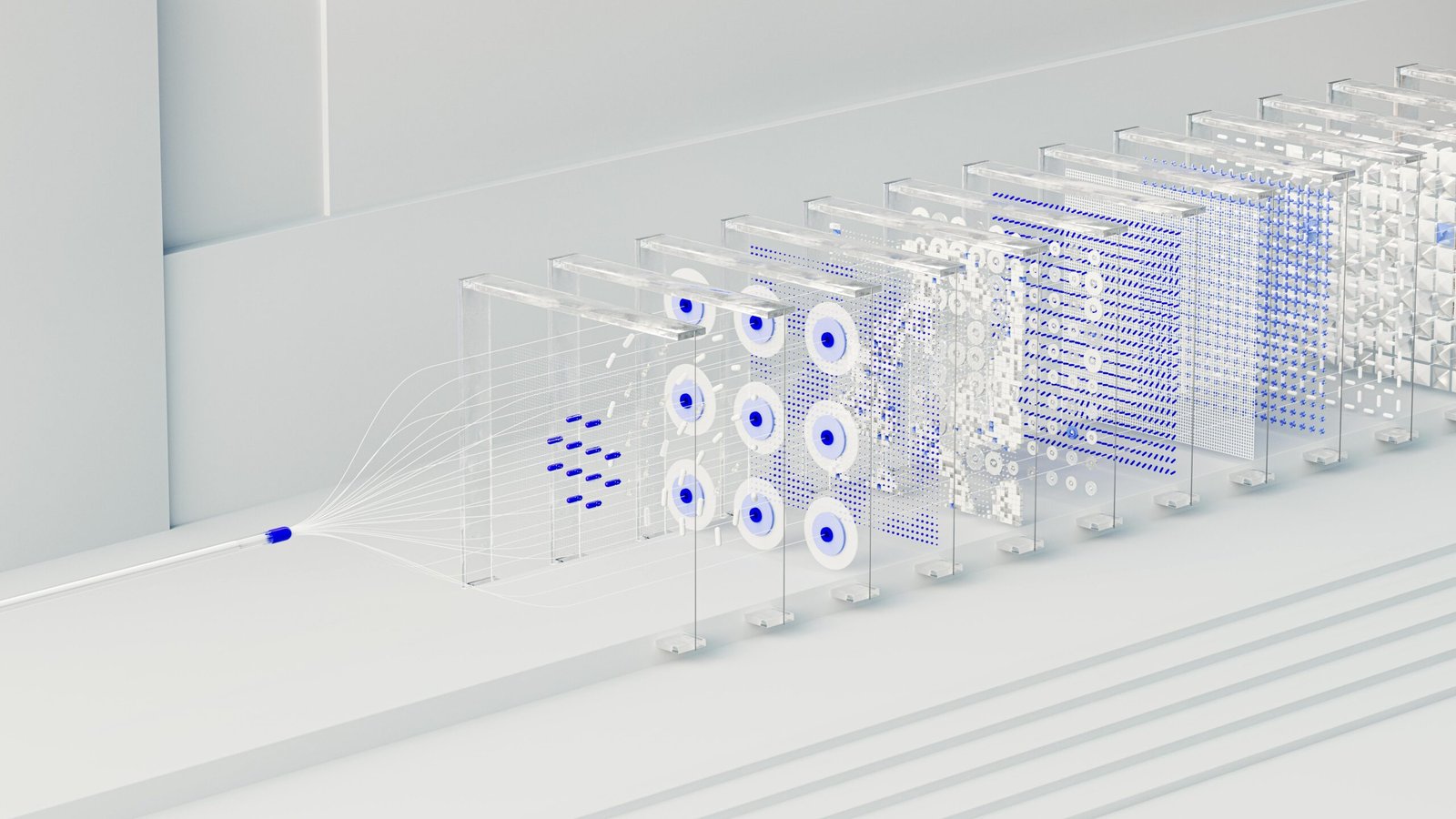
In contrast to CNNs, which employ convolutions for image processing, ViTs implement a transformer architecture motivated by its success in natural language processing (NLP) applications.
Just as transformers handle text, ViTs convert image data into sequences and utilize self-attention mechanisms to discern relationships within images, a process that is key to their success.
ViTs consistently outperform CNNs in a variety of performance metrics, a testament to the power of this unique and innovative approach that is reshaping the landscape of computer vision.

Technology behind Vision Transformers in Computer Vision
A ViT serializes each patch into a vector, maps it to a smaller dimension using single matrix multiplication, and deconstructs an input image into a series of patches (rather than dividing the text into tokens). Afterward, these vector embeddings are processed by a transformer encoder like token embeddings.
ViT introduces a novel image analysis method motivated by Transformers’ success in natural language processing. This approach entails dividing images into smaller regions and applying self-attention mechanisms.
This allows the model to capture local and global relationships within images, resulting in exceptional performance in various computer vision tasks.
The following components comprise the fundamental technology that supports Vision Transformers:
- Image Patching and Embedding: ViTs segment images into smaller, fixed-size portions by analyzing an image simultaneously. Then, each patch is linearly embedded into a dimensional space. This process aligns the 2D image data with the transformer architecture by converting it into a sequence of 1D vectors.
ViTs incorporate positional encodings into the patch embeddings because transformers are designed for data and do not possess inherent spatial awareness.
These encodings provide the model with information regarding the location of each section in the image, which is beneficial for comprehending spatial relationships.
- Self-attention mechanism: The self-attention mechanism is essential for capturing the overarching dependencies and interactions across the image. It allows the model to evaluate the significance of sections in relation to one another. The model can focus on specific regions by calculating attention scores and ignoring pertinent regions.
The series of embedded sections is processed by transformer layers, which consist of feed-forward neural networks and head self-attention. These layers optimize feature representations and facilitate the model’s ability to comprehend patterns in image data.
In conclusion, the final predictions are produced by feeding the output sequence from layers into a multi-layer perceptron (MLP) classification head. This component ensures that the learned features are based on the intended output categories for tasks such as image classification.

CNN vs. Vision Transformers:
There are numerous ways in which ViT is distinguished from Convolutional Neural Networks (CNNs):
- Input Representation: ViT divides the input image into segments and converts them into tokens, whereas CNNs process raw pixel values directly.
- Processing Mechanism: CNNs acquire features using convolutional and pooling layers. ViT employs self-attention mechanisms to assess the relationships among all regions.
- Global Context: ViT’s self-attention inherently captures global context, facilitating the identification of relationships between distant regions. CNNs rely on pooling layers to acquire imprecise global information.
History of Vision Transformers
The successful application of transformers in natural language processing (NLP) served as a solid foundation for their implementation in computer vision tasks, providing reassurance and confidence in the potential of ViTs.
Transformers were first introduced in the 2017 paper “Attention Is All You Need” and have since been extensively employed in natural language processing systems.
This paper introduced transformer architecture in 2017. It advances natural language processing (NLP) by enabling models to comprehend long-distance relationships and process sequences concurrently.
Researchers were intrigued by this development. They recognized its potential for computer vision applications, which prompted further investigation.
A significant milestone was achieved in 2020 when Alexey Dosovitskiy et al. published the Vision Transformer (ViT) paper, “An Image is Worth 16×16 Words: Transformers for Image Recognition at Scale.”
In this paper, transformers were demonstrated to be capable of performing image classification tasks without convolutions, provided that they were trained on a wide range of datasets.
The ViT model outperformed state-of-the-art networks (CNNs) on various benchmarks, which sparked widespread interest within the computer vision community.
In 2021, a pure transformer model exhibited superior performance and efficacy in image classification compared to CNNs, thereby reassuring the audience about the potential of Vision Transformers.
Several substantial modifications to the Vision Transformers were proposed in 2021.
The primary goal of these variants is to be more cost-effective, accurate, and efficient in a specific domain.
In the wake of this success, many enhancements and variations of ViTs have been developed to address scalability, generalization, and concerns about training efficiency. These advancements have fortified transformers’ status in the field of computer vision.

Computer Vision Applications of Vision Transformers
The adaptability and efficacy of Vision Transformers have been demonstrated in a variety of computer vision tasks. This instills confidence in the audience regarding the technology’s potential applications by assuring them of its dependability and adaptability.
Examples of applications that are particularly noteworthy include:
- Image Classification: ViTs have demonstrated exceptional performance in image classification assignments, achieving top-tier results on datasets such as ImageNet. Their ability to capture context and hierarchical features facilitates their ability to identify patterns in images.
- Vision Transformers (ViTs) can improve the performance of object detection models by enhancing their capacity to identify and pinpoint objects in images by utilizing self-attention mechanisms. This feature is advantageous in scenarios where objects exhibit variations in size and aspect.
- ViTs exhibit a high level of proficiency in dividing images into sections, which is essential for applications such as medical imaging and autonomous driving. This is in terms of segmentation. Object boundaries are accurately delineated by their ability to encapsulate dependencies.
Additionally, Vision Transformers have been employed in models to generate high-quality images. These models can produce coherent visuals by acquiring the ability to concentrate on specific components of an image.
Furthermore, pre-trained Vision Transformers transfer learning across downstream duties, rendering them particularly suitable for situations with restricted labeled data. This capability expands the range of implementations across various domains.
In numerous industries, Vision Transformers (ViTs) are being implemented with the potential to improve computer vision capabilities considerably.
ViTs have the potential to revolutionize the way we perceive and interact with visual data, with a wide range of intriguing future applications. As a result of this potential for transformation, the audience should be motivated and filled with optimism regarding the future of computer vision.

We should investigate how various sectors are employing ViTs:
- Healthcare: Vision Transformers contribute to advancing diagnostics and treatment planning in the imaging sector.
They are responsible for a variety of tasks, including identifying lesions in MRI and CT scans, segmenting medical images for comprehensive analysis, and predicting patient outcomes. Vision Transformers are exceptional at identifying data patterns with dimensions that contribute to more accurate diagnoses and early treatments that improve patient well-being.
- Autonomous Vehicles: The automotive industry is employing vision transformers to enhance the perception capabilities of self-driving vehicles. These transformers can detect objects, recognize lanes, and segment scenes, thereby enabling vehicles to understand their surroundings more effectively for navigation.
Vision Transformers’ self-attention mechanism allows them to navigate scenarios that include objects and a variety of illumination conditions, which is essential for providing secure autonomous driving.
- Retail and e-commerce: Retail businesses use vision transformers to enhance consumer interactions by incorporating search features and recommendation systems.
These transformers’ ability to analyze product images and recommend additional items enhances the purchasing experience. They also utilize assessments to identify stock levels and product arrangements to manage inventory.
- Manufacturing: Vision Transformers are employed in the manufacturing process to ensure quality and maintain equipment. They are adept at accurately identifying product defects and monitoring apparatus for signs of deterioration over time.
Vision Transformers maintains operational effectiveness and product quality standards when inspecting images from production lines.
- Security and Surveillance: Vision Transformers enhance security systems by improving facial recognition, detecting anomalies, and monitoring activities. In surveillance applications, they can analyze video feeds to detect unauthorized entry or behaviors, thereby promptly notifying security personnel. This proactive approach preemptively addresses security hazards.
- Agriculture: The agricultural industry benefits from Vision Transformers, which improves crop monitoring and yield forecasting.
They evaluate crop health, identify invasions, and forecast harvest results by examining satellite or drone images. This enables producers to make informed decisions, optimize resource utilization, and increase crop yields.

The Prospects for Vision Transformers in Computer Vision in the Future
The future of Vision Transformers in computer vision is promising, as their evolution and utilization are expected to be influenced by anticipated advancements and trends.
- Enhanced Efficiency: The objective of ongoing research is to improve the efficiency of Vision Transformers by reducing demands and making them more appropriate for deployment on edge devices. This objective is being pursued by investigating techniques such as model pruning, quantization, and efficient self-attention mechanisms.
- Multimodal Learning: Integrating Vision Transformers with data types such as text and audio can improve models’ complexity and resilience. This integration creates opportunities for applications that necessitate comprehension of both content and contextual cues, such as the analysis of audio signals and videos.
- Transfer by Pre-trained Models: The development of scale-trained Vision Transformers will streamline the transfer learning process, enabling the customization of models for specific tasks with minimal labeled data. This is particularly beneficial for industries that are grappling with data availability challenges.
- Improved Interpretability: The interpretability of Vision Transformers is becoming increasingly important as they are being used more frequently.
In the healthcare and autonomous driving sectors, it is essential to understand the process by which these models arrive at their conclusions. Techniques are being developed to emphasize the necessity of addressing the need for transparency and visual attention maps.
- Real-time Applications: Hardware acceleration and algorithm optimization advancements will make the deployment of vision transformers in real-time applications feasible. This development is crucial in applications such as robotics, interactive systems, and transportation, where the ability to make rapid decisions is essential.
The future of Vision Transformers is promising, as research is being conducted to improve their efficacy, integrate them with data types, and simplify their interpretation. As these advancements continue, Vision Transformers are expected to contribute to the evolution of smart systems.

In conclusion
Vision Transformers represent a significant advancement in computer vision technology, providing capabilities surpassing conventional convolutional neural networks.
Their exceptional ability to comprehend images and complex image data patterns is advantageous in sectors including healthcare, autonomous vehicles, retail, and agriculture.
Vision Transformers are not revolutionary innovations; rather, they are transformative forces that stimulate innovation in various sectors. Continuous advancement is the key to uncovering opportunities and solidifying their position as leaders in computer vision advancements.

